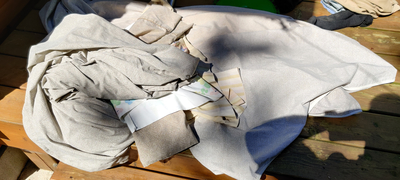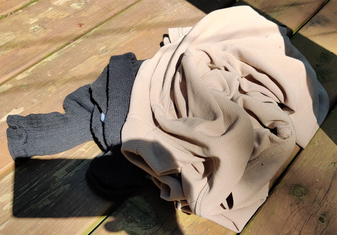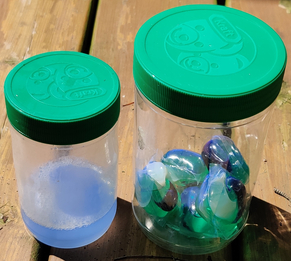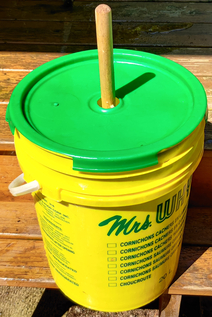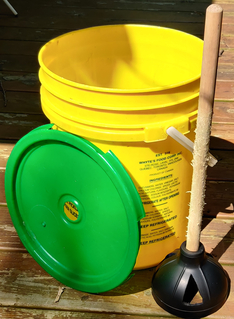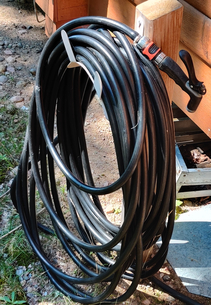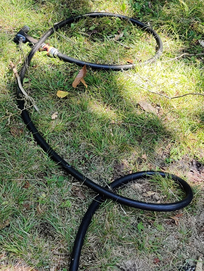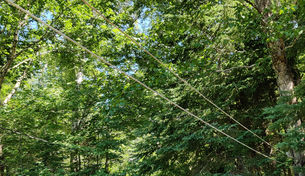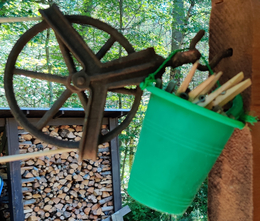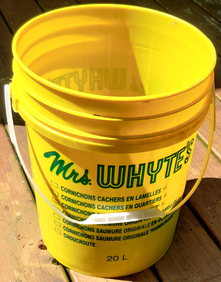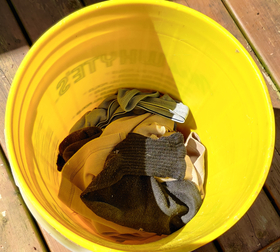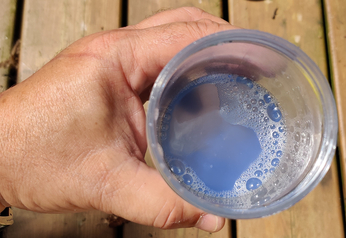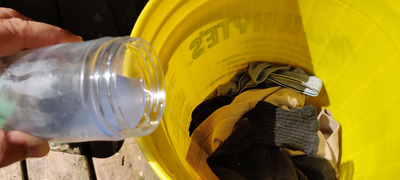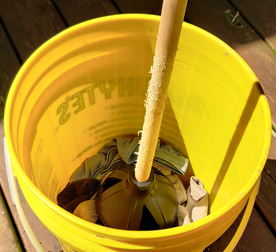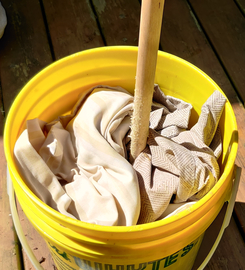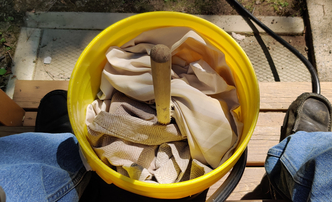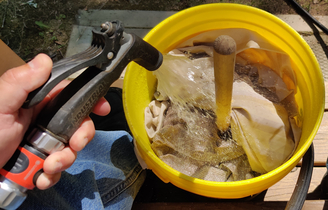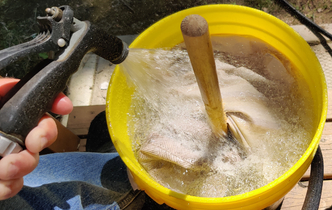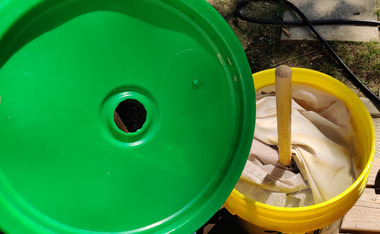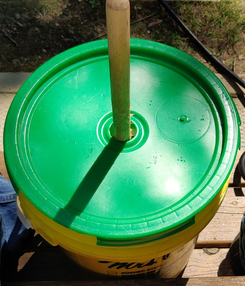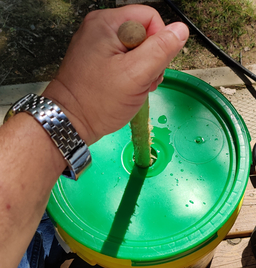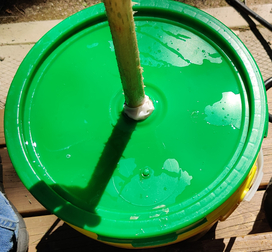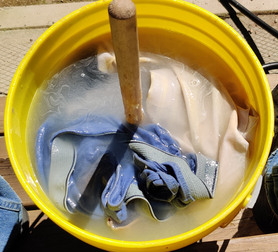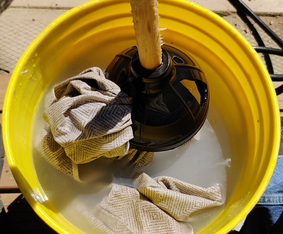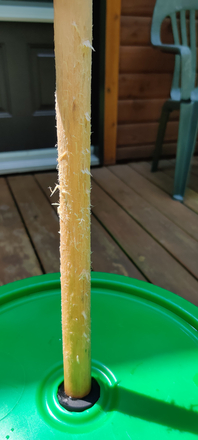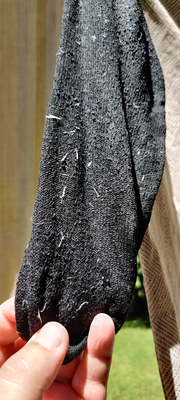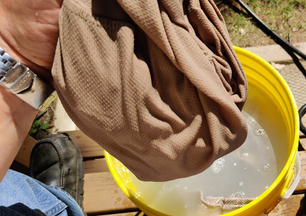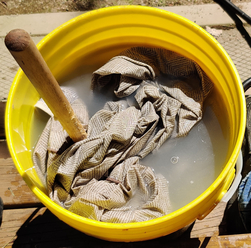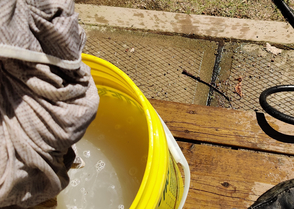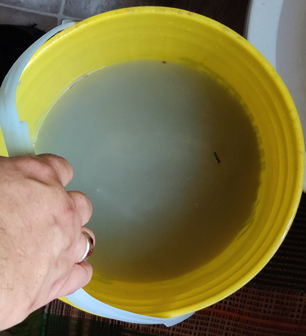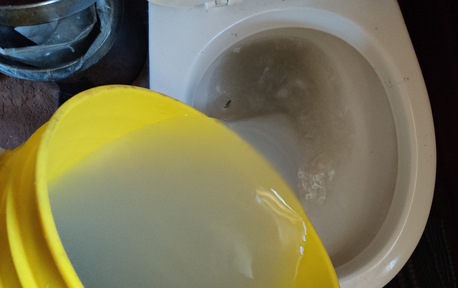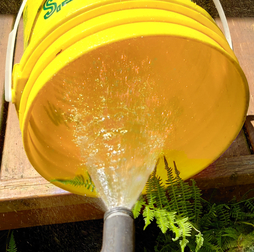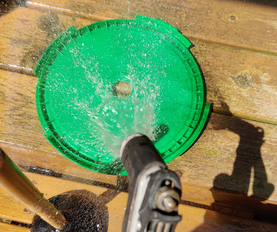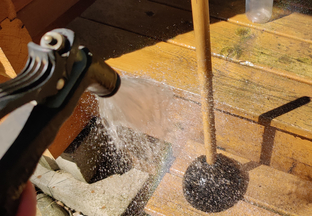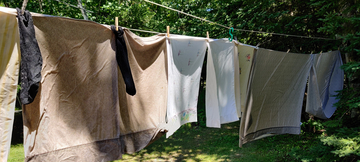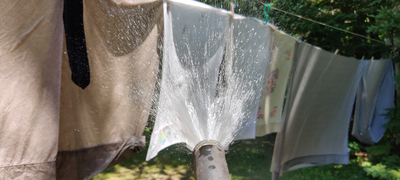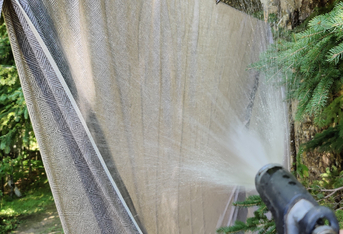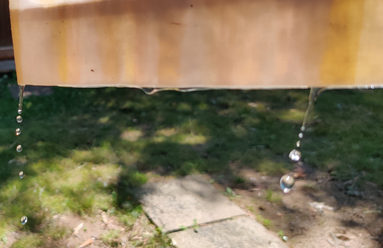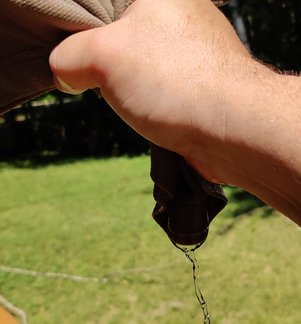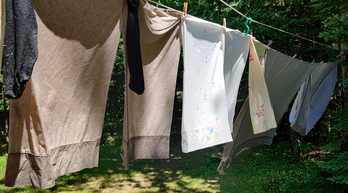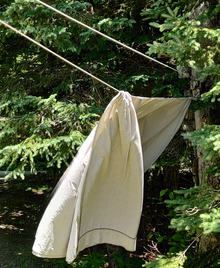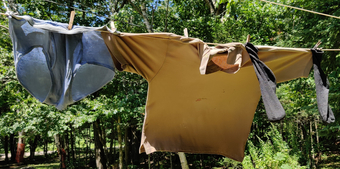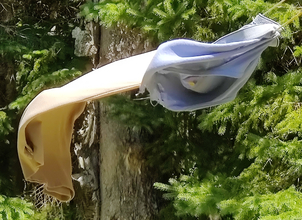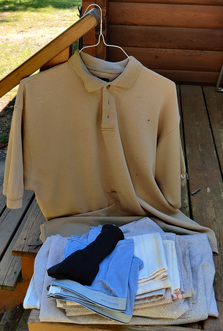I bought a food dehydrator in early 1997 while I was still involved as an adult member in Scouting, and began by drying (mostly) various fruits for Scout Troop camping trips; Troop members were eager to test out the results of my efforts. While I am no longer involved in Scouting, I have continued drying fruits; I quickly decided that my favourite by far was dried pineapple, which comes out like candy to me.
A short overview of my very early experiences with drying food, from a Scouting perspective, is at what would have been a blog back in the late 1990’s before blogs were a thing at https://www.malak.ca/super.html#dried.
Drying the pineapples:
I keep an eye out for sales on pineapples, and brought home six pineapples last week:
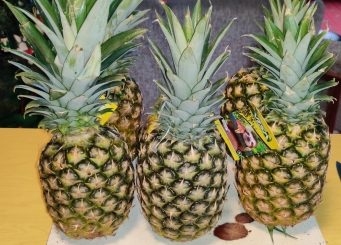
I brought my cutting board, knife, and corer down to the bar area downstairs, where I normally do my fruit drying:
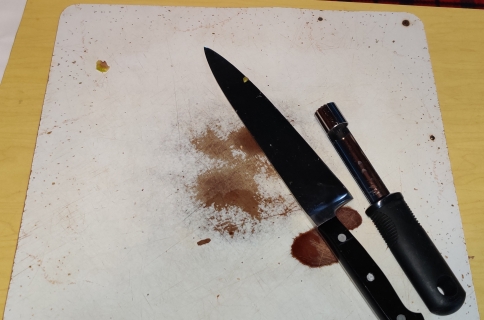
A bucket for the compostable trimmings was also set out:
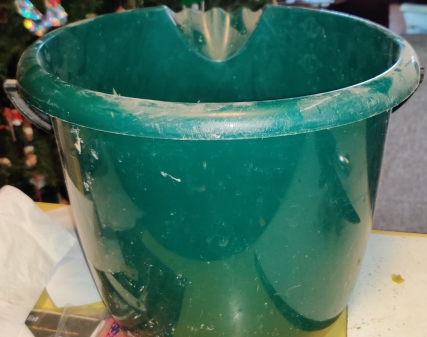
My food dehydrator was of course taken out, with all its extra trays …
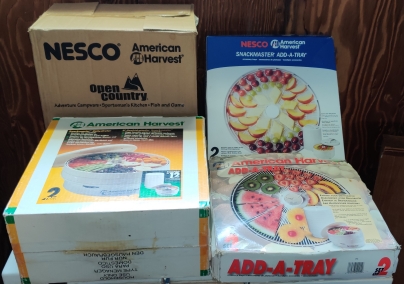
… and the unit was plugged into an extension cord caddy that was plugged into an outlet in an adjoining room, since the bar has an old outlet that doesn’t accept polarized plugs:
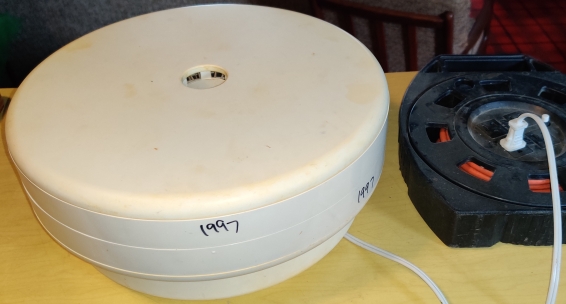
The food dehydrator was set to 135F for drying fruits and vegetables:
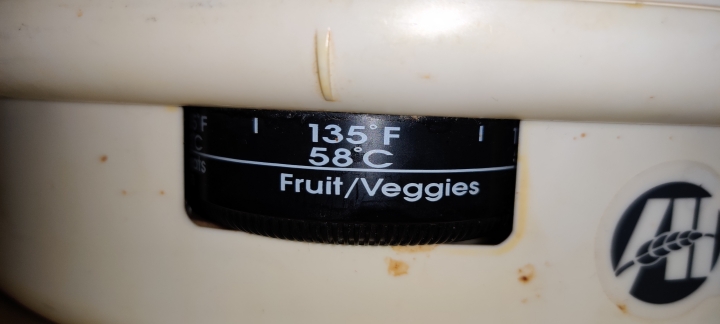
Now to the pineapples: The labels and their plastic tags were removed from the pineapples:
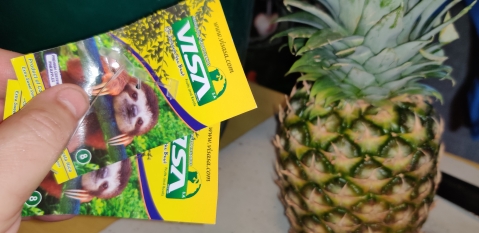
A pineapple was placed on its side in order to trim off the top:
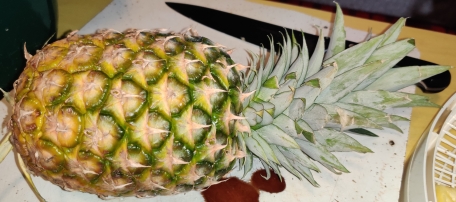
The top of the pineapple was sliced off:
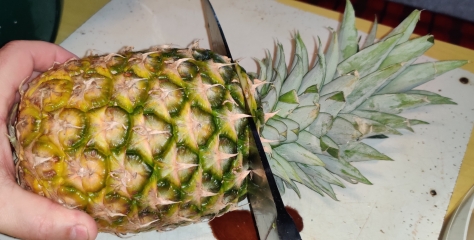
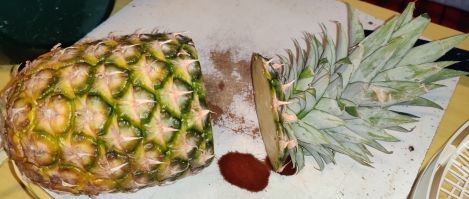
The top of the pineapple was placed in the scraps bucket:
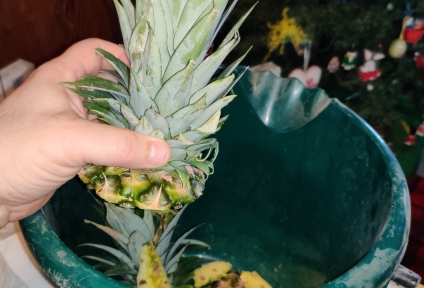
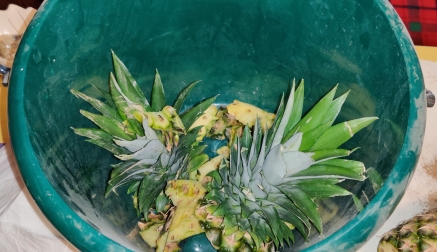
The pineapple was rotated so as to slice off the bottom:
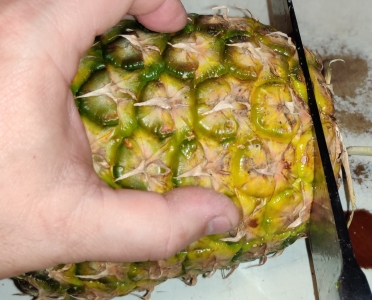
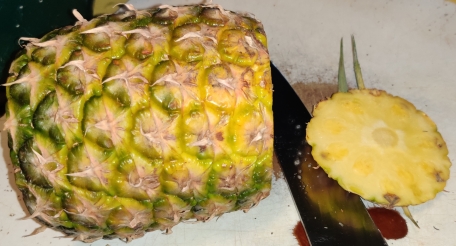
The bottom of the pineapple was placed in the scraps bucket:
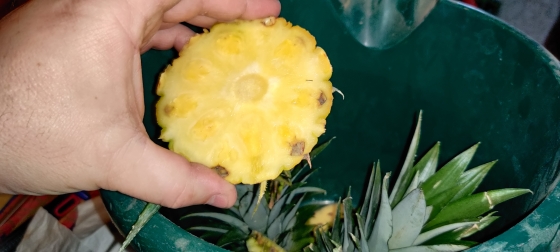
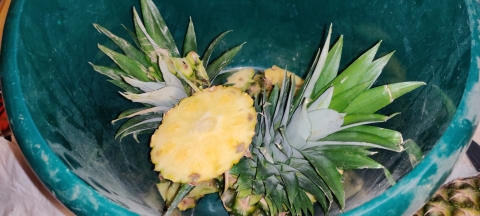
The pineapple is now ready for the rest of the trimming:
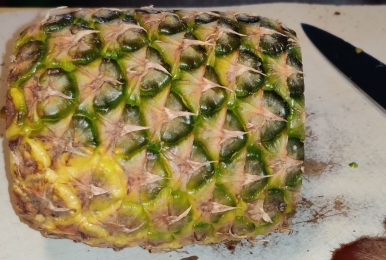
I started trimming the skin off the pineapple:
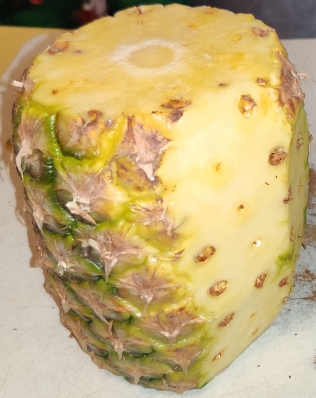
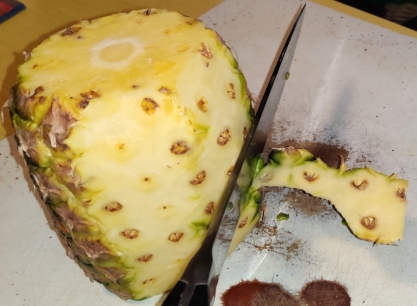
As part of trimming the skin off the pineapple, sometimes the bottoms have to be trimmed too because of the somewhat rounded shape of pineapples, making it tricky sometimes to trim off the skin in full slices:
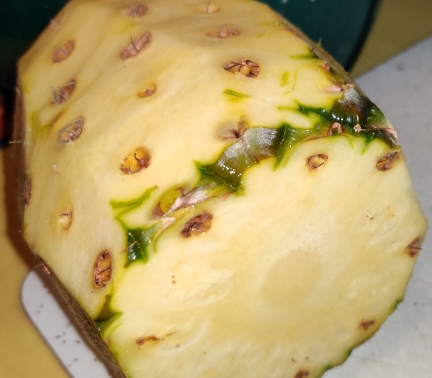
The trimmed pineapple skins …
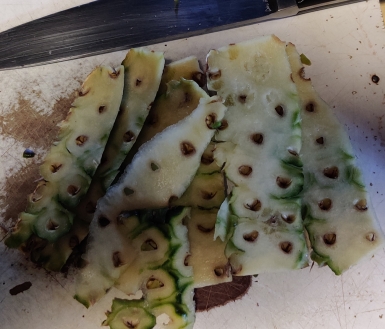
… were placed in the scraps bucket:
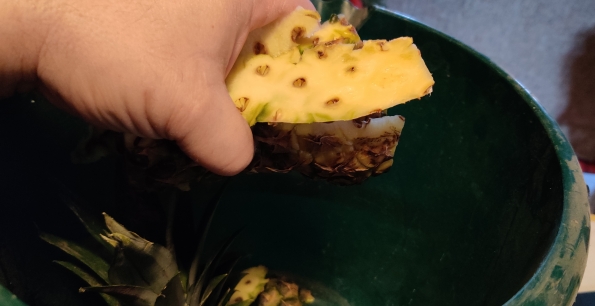
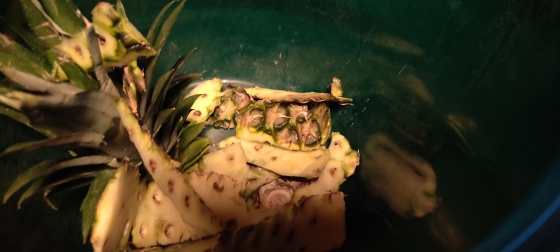
The trimmed pineapple was again placed on its side …
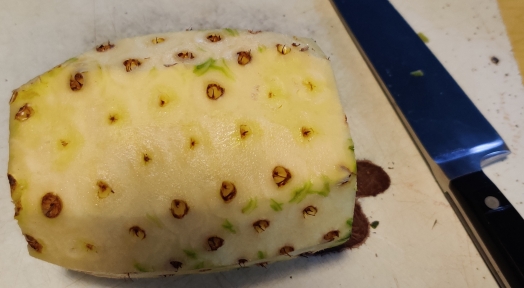
… and sliced into two halves roughly at its centre, essentially to accommodate the length of my corer, although the resulting slices tend to be of a convenient size as well:
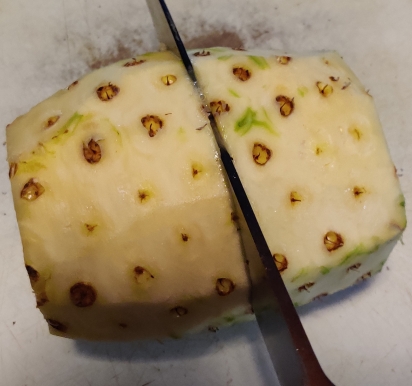
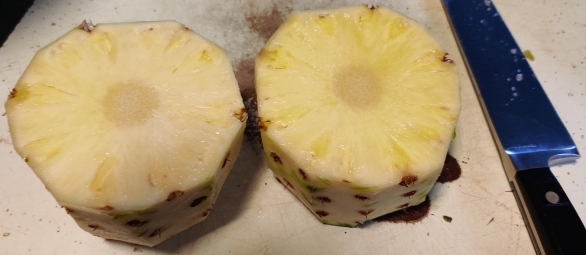
An apple corer was used to remove the pineapple cores:
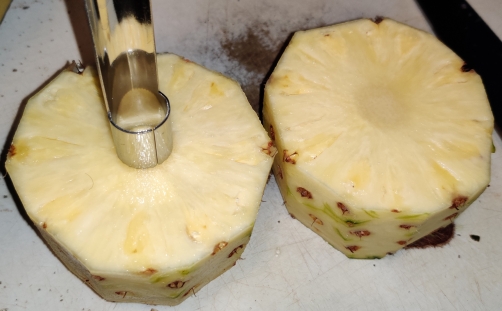
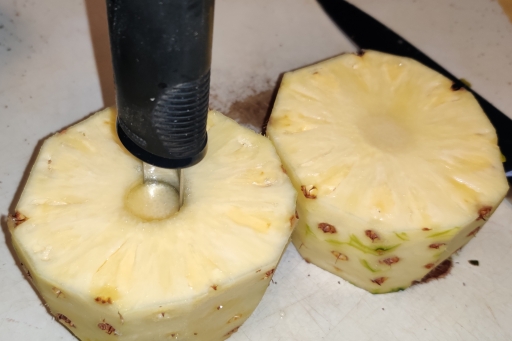
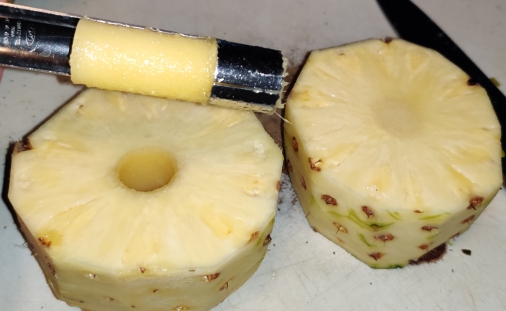
I began slicing pieces off the cored pineapple half, roughly two milimetres thick:
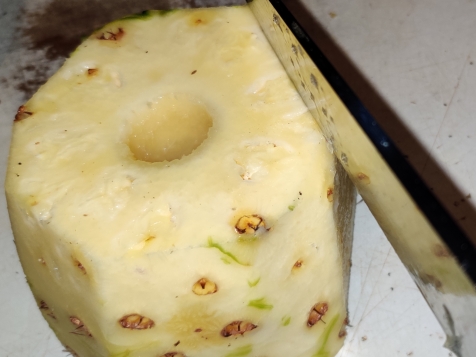
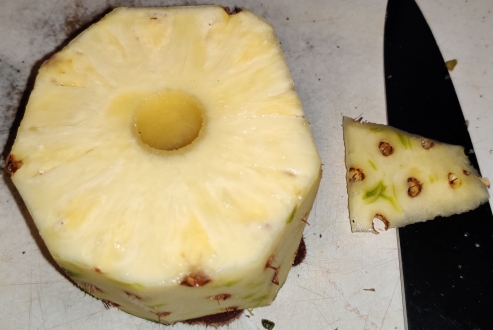
The slices were placed on a drying tray:
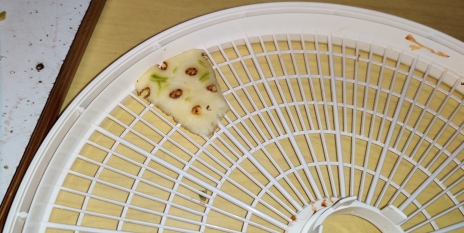
More slices were sliced off the pineapple, to about half of the pineapple half:
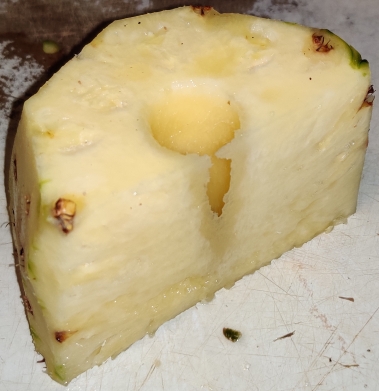
… until the tray was filled:
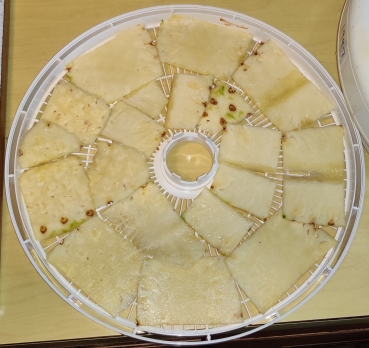
The filled tray was placed on the food dehydrator base:
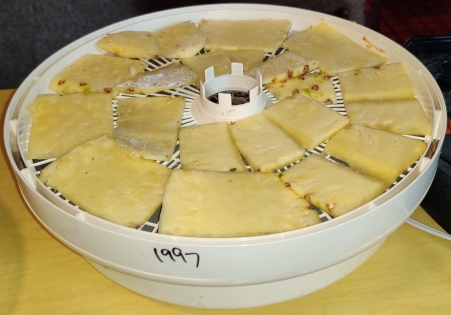
The top of the dehydrator was placed on the tray:
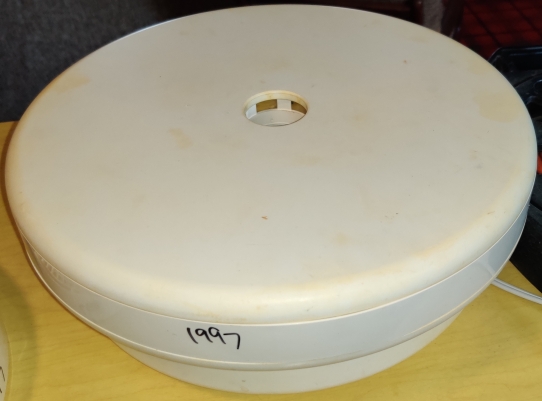
Oh and here’s my cat to help me out:
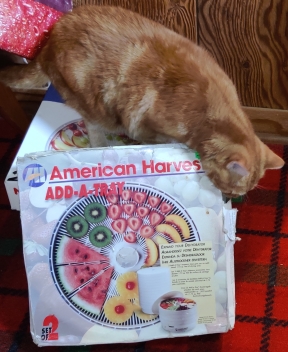
I continued trimming and slicing the pineapples, filling twelve trays; as can be surmised from the following picture, in 2012, I added an additional eight trays to the original four I’d bought in 1997!)
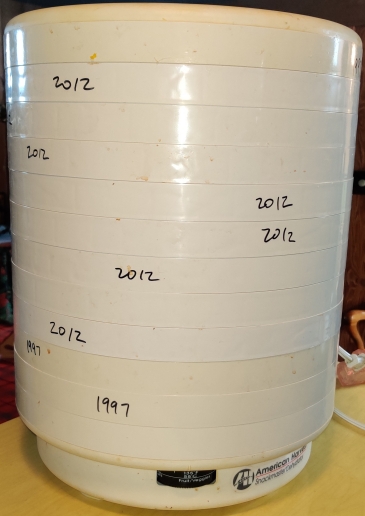
The twelve trays were filled with a bit more than four and a half of the pineapples I’d purchased, leaving at this point a little less than one and a half pineapples to slice up later as the slices in the dehydrator dried and made space:
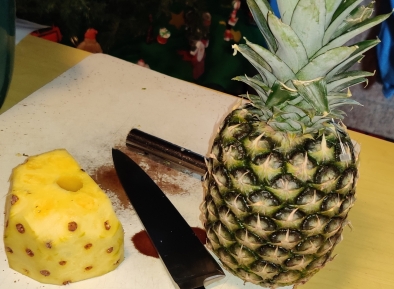
At this point, the breaker on the extension cord carrying case decided to trip (in my experience, unusual for a single device with a peak draw of only about 550 watts, although I do suspect that the caddy does have a lower trip level than a normal household circuit breaker):
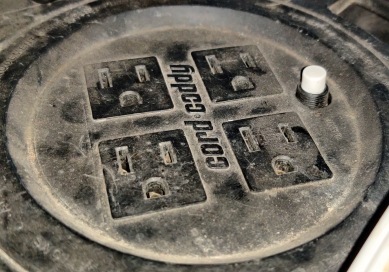
Quickly, a new extension cord was taken out:
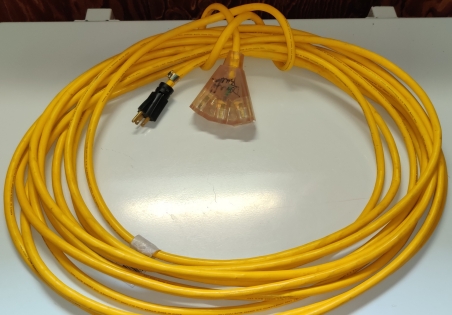
… which was plugged into an outlet, and the dehydrator plugged into the new extension cord:
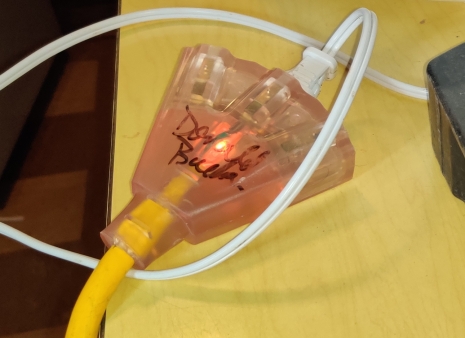
Back to the pineapples, the scraps were placed in the scrap bucket, which was ultimately emptied into my municipal compostable waste bin:
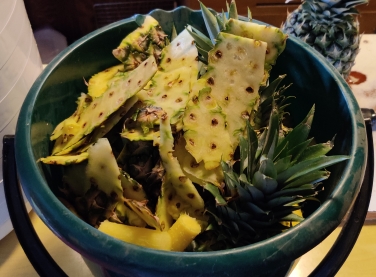
At this point, Mom asked for some mashed pineapple, and got a total of six containers, which were placed in the freezer:
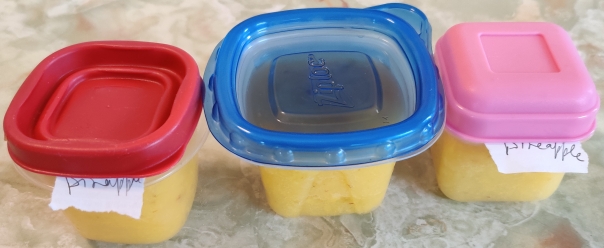
After about six hours, here’s what a tray of partly dried pineapple slices looked like, including the size shrinkage:
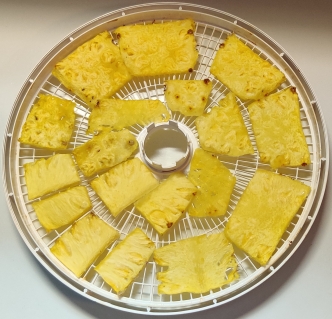
The partly dried pineapple slices were shifted around to make space:
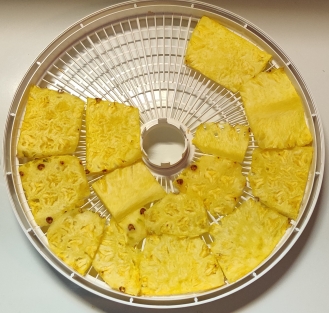
After space was made on all the trays, four trays were emptied:
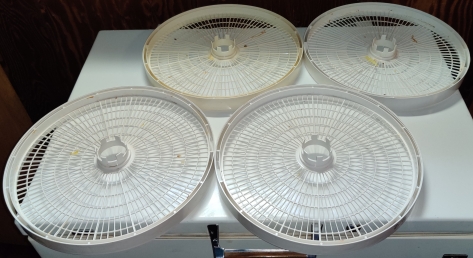
… and the first few pineapple slices dried to my liking were removed from the trays. Allowed to completely dry, pineapple will become crispy like potato chips; I like dried pineapple that is still a bit chewy and flexible, while there is still a very small amount of humidity left in the slices. As such, I remove slices when they have a leathery feel, and after the surface of the slices are no longer sticky.
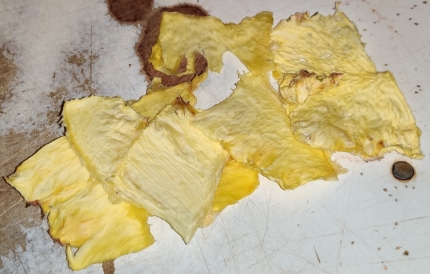
A zipper style sandwich bag was taken out to store the dried pineapple:
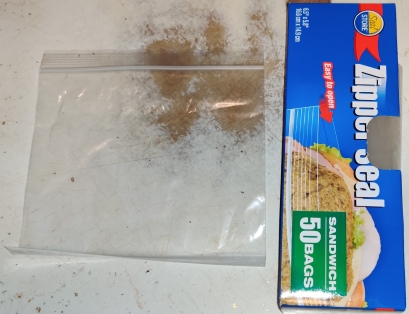
… and the dried pineapple slices were stacked and placed in the bag:

At this point — seven hours in — I finished slicing the rest of the pineapples, spread them on a couple of the emptied trays, and inserted the filled trays back in the dehydrator stack, for a total of ten trays:
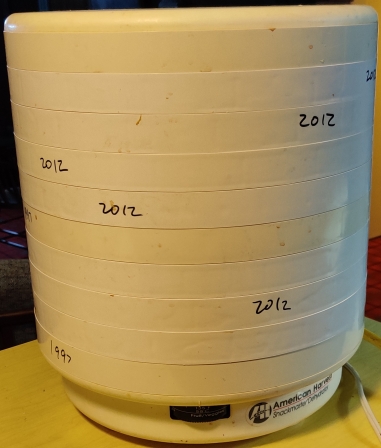
After nine hours, here’s what the pineapple looked like:
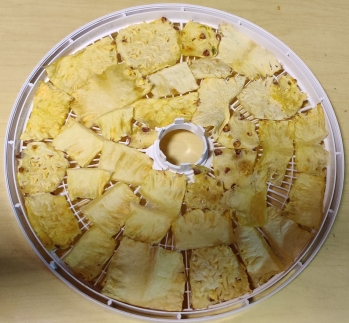
… and a few more slices of dried pineapple were taken out for bagging:
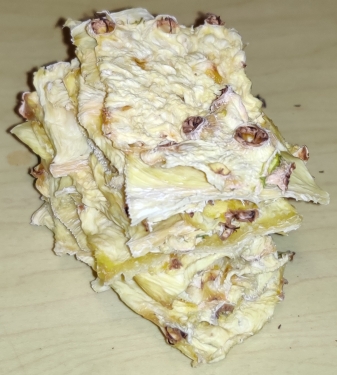
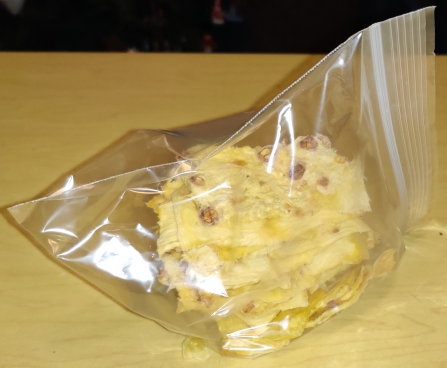
… and my dehydrator was down to seven trays after nine hours:
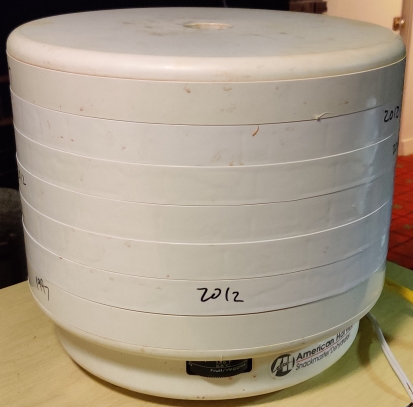
After twelve hours, the dehydrator was checked again:
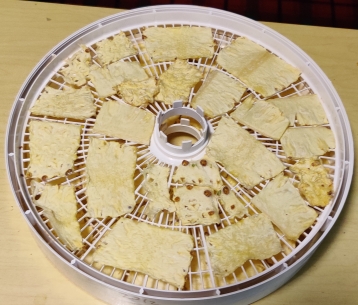
… and more dried pineapple was taken out after twelve hours:
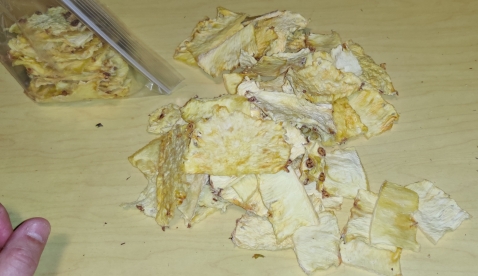
… and stacked for bagging:
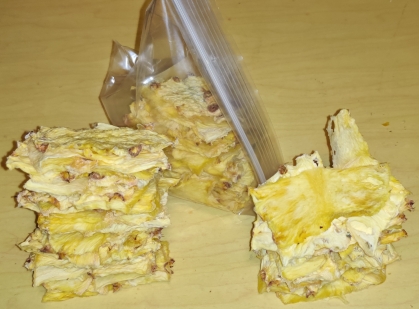
… and bagged:
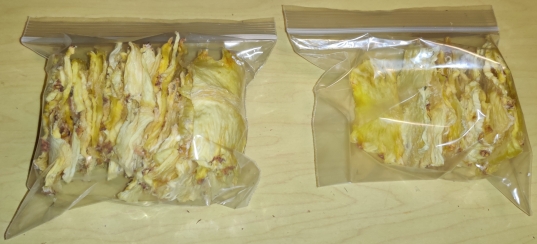
… and after all the shifting around and bagging, I was down to five trays in the dehydrator:

At this point, I had gone to bed, but I woke up after a couple of hours at midnight, and checked on the dehydrator, shifting pineapple slices around and removing dried sliced pineapple. Here’s the bagged cumulative production after fourteen hours:
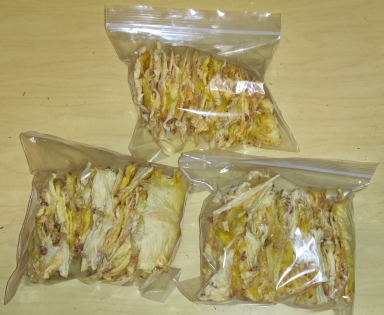
… and I was down to four trays after fourteen hours:
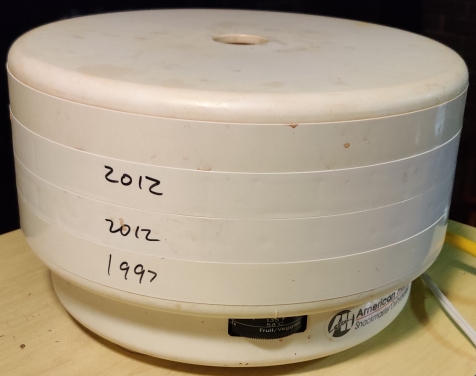
Finally, after seventeen hours — in this case, three in the morning! (yes, I had set my alarm) — I emptied the dehydrator and bagged the last of the dried pineapple slices, for a total of five bags of dried pineapple slices, from a bit over five pineapples:
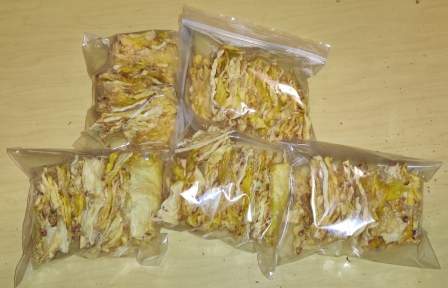
After a couple of days, I started eating the dried pineapple — yes, like a kid in a candy shop! 🙂

